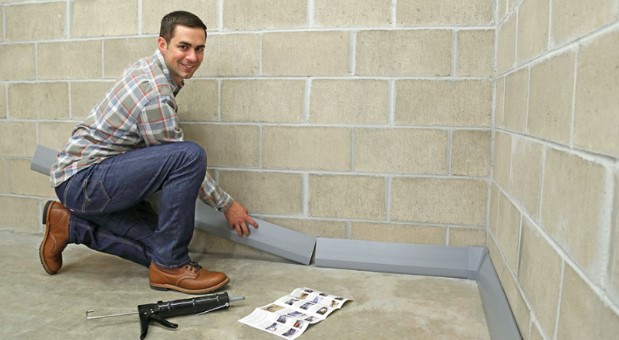
If you have dampness issues inside your basement and you notice that it is uninviting, moldy and damp, you have to do something about it because it can expand and cause structural issues to your household.
The main reason why damp happens in the basement is that cellar walls are close to the ground, and they do not have a waterproof layer that will help them protect against water damage. As a consequence, walls will be surrounded by conditions that will increase dampness.
The best way to protect your home is to find the appropriate service such as Cumbria damp proofing that will address the problem with ease since humidity is an invitation to fungus, molds, and mildew. Have in mind that dampness is closely associated with health issues as well.
Apart from salts, that water contains, when it moves through the walls it will cause the damage to the foundation of your home, and it can create various structural problems along the way. That is the main reason why you should waterproof your basement as soon as you detect dampness.
Best Ways to Protect Your Basement
If you want to protect your basement, you will have to waterproof it so that you can eliminate associated problems that we have mentioned above. It is essential and necessary to prevent moisture in floors and walls from entering the internal wall.
Since each basement is unique, we cannot give you appropriate calculations on how to waterproof it because it depends on its form and space. However, two most common ways of waterproofing are structural waterproofing and cavity drain tanking membrane.
To learn more on waterproofing process, you should click here.
Tanking Membranes
This particular method features lining the basement floors and walls with dimpled, robust and waterproof membranes that you have to apply to all underground structures. Since polyethylene membranes feature high density, you will get an air gap between them and wall, which will permit water and air circulation but without significant damage.
At the same time, water can easily pass into constructed channels that you can make so that you can pump it away. Please have in mind that basement floor has to be angled toward the pump so that you can reduce the water damage and so that water can run into the pump from the cavity.
Check this link: https://www.designingbuildings.co.uk/wiki/Tanking to learn more on tanking membranes and its use.
It is essential to understand that membranes are fixed to original wall surfaces by using plastic plugs, and you can fix it with plasterboard as the alternative protection. You can choose different types of membranes, but the final choice should be based on the anticipated flow rate and finish.
Advantages of Cavity Drain Membranes
- Simple to install
- Lightweight solution
- It won’t interfere with the structural integrity
- Sound absorbing and insulation features
- It will create a dry environment
Structural Waterproofing
This particular type of waterproofing features another name such as tanking slurry, and it is one of the most appealing options which is affordable and proven because people are using it since the ’50s.
As soon as you apply it to your basement, it can withstand external water pressure and maintain a dry environment because it will create a physical barrier so that water cannot enter the walls.
It is simple to apply it, and you have to mix the formula. You will purchase it as powder, and combine it with water to make the similar thing as cement so that you can waterproof the wall surface.
Other Common Methods
- Check Guttering – You should understand that the main reason why basement water issues happen is due to water pooling next to your foundation. Therefore, it is essential to waterproof your basement from the outside. You can start by inspecting downspouts and gutters, so that you can ensure that they are not rusted, plugged, and leaking. If you notice something faulty, it is vital to fixing it as soon as possible. The best time to check whether water is flowing through your gutter is when it is raining. Since most drains come from metal design, some areas can rust and start to crack, which will cause leaking inside. Therefore, you have to make sure that all connections are tightly sealed because you do not want to create havoc on your home.